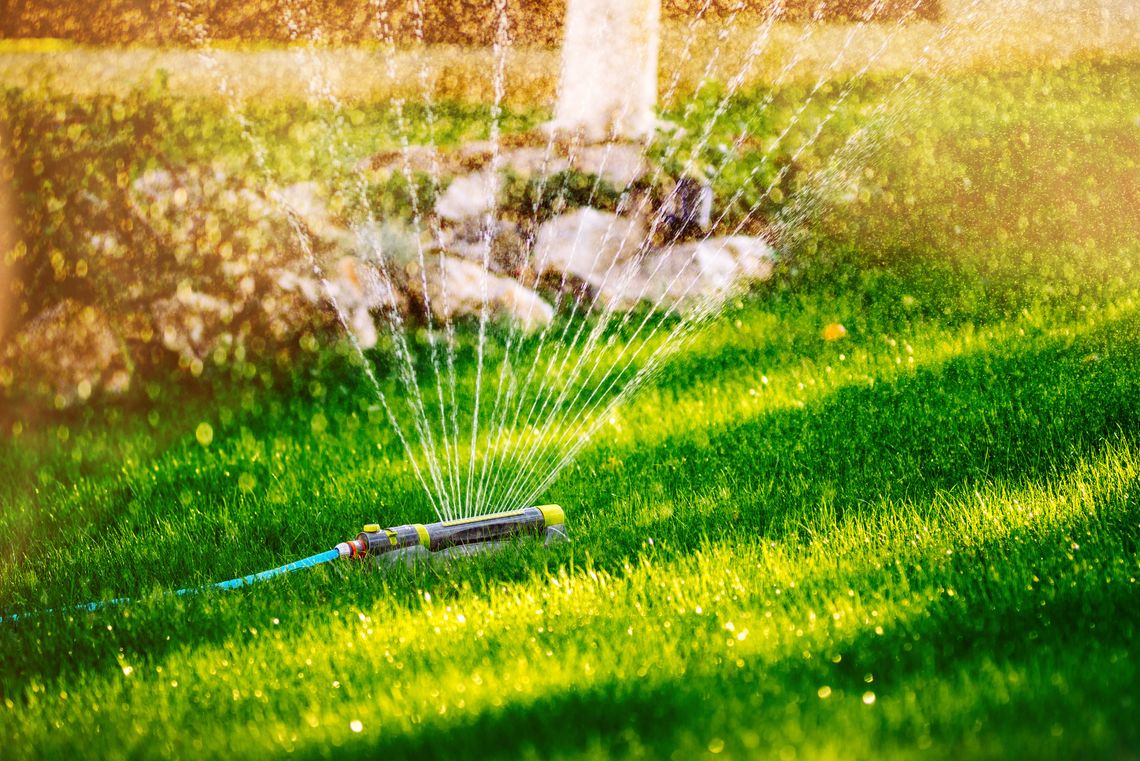Home lawns and turf areas around homes, office buildings, parks, and churches serve as pleasant green backdrops, but do so much more. These little grass plants that make up the lawn serve as miniature air-conditioners and help decrease pollution.
On a block of 8 houses or buildings, the front lawns have the cooling effect of 70 tons of air-conditioning. The plants in these front lawns transpire water to cool themselves. They also cool the surrounding area. Roughly 50 percent of the heat or sunlight striking a turf area is eliminated by transpiration. The plants in transpiring water to cool themselves, also cool the surrounding areas. When the temperature of the sidewalk is 100⁰ F, the adjacent turf remains near 75⁰ F. This cooling may well last into the night, with studies showing a 13-degree cooling at 9:00 p.m.
However, this air-conditioning is not free. An average 5,000-square-foot lawn transpires about 3,000 gallons of water on a hot summer day. This water can either be supplied by rain or irrigation.
A 250-square-foot lawn produces enough oxygen for a family of four. A lawn helps prevent soil erosion and enhances ground water exchange. Water infiltration is much higher on turfed areas than bare dirt areas. This higher infiltration prevents water from running off and encourages it to enter the ground water streams. Grass roots hold the soil in place better than any other plant.
Some folks love working in the yard and maintaining a quality turf. Others despise yardwork and want a low-maintenance lawn. Still others are confused about how to keep a well-maintained lawn.
One of the first steps to having a good lawn is choosing the best turfgrass to suit the time and money you have for maintenance. Each variety of grass has its advantages, and disadvantages. Do you need grass that grows in the shade or full sun, do you want a fast growing or slow growing grass, a warm season grass or cool season grass?
Choosing the best lawn grass involves your personal judgement based on your needs and the conditions of your property. It gets down to four things:
1. The amount of sunlight. This is the most important factor in the selection of the best grass to grow. No species of turfgrass will grow well in complete shade. If an area receives at least half a day of direct sunlight, one can grow any of the grasses adapted for our region.
2. Temperature. Temperature is important in determining which grasses will grow. People who try to grow St. Augustine or Centipede in northern areas of the state may see some damage every winter.
3. Maintenance. Decide how much work you want to put into your lawn. Some grasses are established with seed, others require sprigs or plugs. After the lawn has been established, some grasses require little care other than mowing, while others require almost constant attention to fertility, water, and pest control.
4. Soil. Each species of grass has a soil type to which it is well adapted. All grasses perform well in well drained, loamy soils, but most Mississippians do not have the ideal soil. The most important consideration of soils is the ability of water to move into and through the soil. No grass survives long in standing water. A second factor is the acidity level or pH of the soil. It is easier to plant a grass that is adapted to a certain pH level, than to constantly fight to adjust the pH.
Sources - Establish & Manage Your Home Lawn, Extension Publication 1322


Comment
Comments